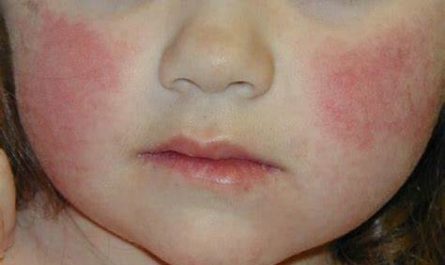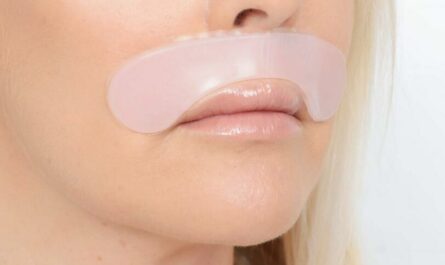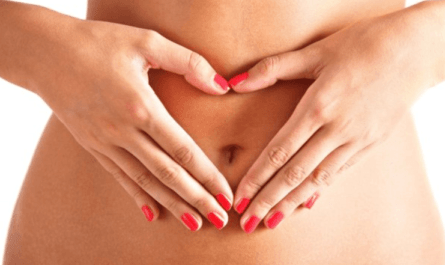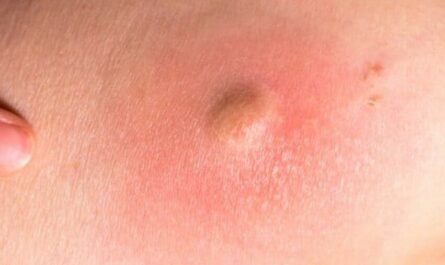Body fat percentage refers to the proportion of fat in our bodies relative to our total weight. It is an important indicator of our overall health and can provide valuable insights into our fitness levels. In this article, we will delve into the intricacies of body fat percentage and present a comprehensive body fat percentage chart for men and women.
What is Body Fat Percentage?
Before we explore the body fat percentage chart for men and women, let’s first understand what body fat percentage means.
Body fat percentage refers to the proportion of fat in your body compared to your total body weight. It is a more accurate measure than body weight alone, as it accounts for fat distribution throughout the body. A healthy body fat percentage varies based on factors such as age, sex, and fitness level.
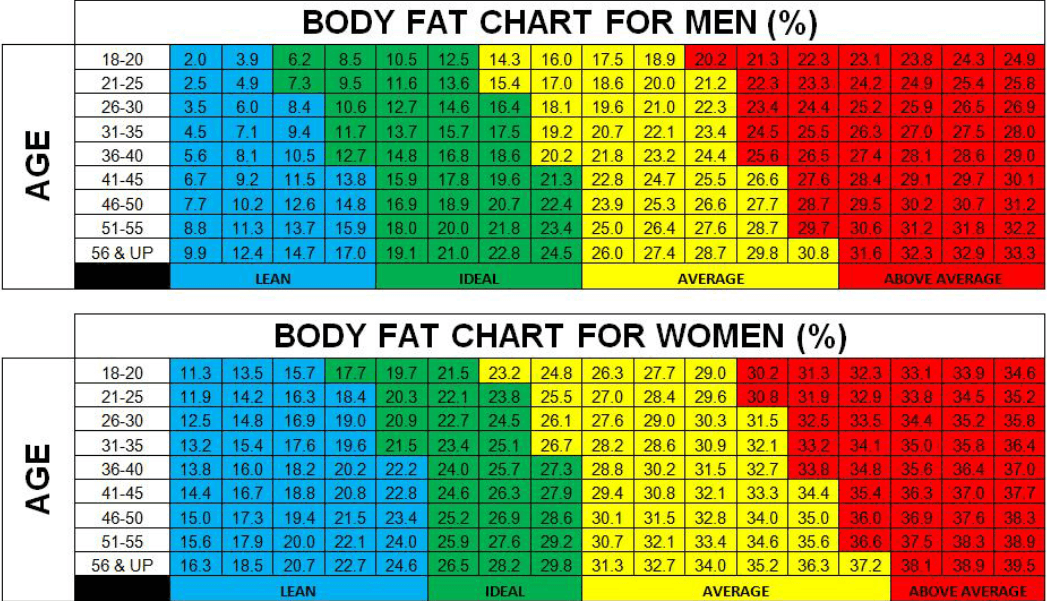
Body Fat Percentage Chart for Men
It is important to know that men and women have different body fat percentages. Women have higher body fat percentages than men as they require higher fat levels for a safe pregnancy.
| Chart for Men | |
| Essential Fat | 2 – 5 % |
| Athletes | 6 – 13% |
| Fitness | 14 – 17 % |
| Acceptable | 18 – 25 % |
| Obese | More than 25 % |
Men usually have 2 to 5 percent of essential fats. Athletes are commonly required to have 6 to 13 percent of body fat. People who engage in physical activities to remain fit have 14 to 17 percent of body fat. The acceptable BFP for men is from 18 to 25 percent. Those who have more than 25 percent of body fat are considered obese.
Remember that the ideal body fat percentage also changes as you age. The body requires more fats but just enough to stay healthy. Here is the body fat percentage chart in men according to age.
| Age | Ideal Body Fat Percentage in Men |
| Up to 20 | 8 – 14 % |
| 21 to 25 | 10 – 15 % |
| 26 to 30 | 11 – 16 % |
| 31 to 35 | 13 – 17 % |
| 36 to 40 | 15 – 20 % |
| 41 to 45 | 16 – 22 % |
| 46 to 50 | 17 – 23 % |
| 51 to 55 | 20 – 25 % |
| 56 and more | 21 – 26 % |
As the age increases, the ideal or acceptable body fat percentages also increase. Individuals up to 20 years old have an ideal 8-14 percent fat percentage. Those 21 to 25 years old need 10-15 body fat percentages.
People 26 to 30 years old need to have 11-16 percent. For 31 to 35 years old, the ideal body fat percentage is 13-17 percent. Those who are 36 to 40 years old are required to have 15-20 percent.
41 to 45 years old have an ideal body fat percentage of 16-22 percent. Those who are 46 to 50 need 17-23 percent. For 51 to 55, the ideal percentage is 20-25 percent. People who are 56 years old have an ideal body fat percentage of 21-26 percent.
Body Fat Percentage Chart for Women
Women have higher body fat percentages than men because of the need for childbearing.
| Chart for Women | |
| Essential Fat | 10 – 13 % |
| Athletes | 14 – 20 % |
| Fitness | 21 – 24 % |
| Acceptable | 25 – 31 % |
| Obese | 32 % or more |
Women usually have 10 to 13 percent of essential fats. Athletes are commonly required to have 14 to 20 percent of body fat. People who engage in physical activities to remain fit have 21 to 24 percent body fat.
The acceptable BFP for women is from 25 to 31 percent. Those who have more than 32 percent of body fat are considered obese.
The ideal body fat percentage for women also increases as they age. Here is the body fat percentage chart for women according to age.
| Age | Ideal Body Fat Percentage in Women |
| Up to 20 | 18 – 23 % |
| 21 to 25 | 19 – 24 % |
| 26 to 30 | 21 – 25 % |
| 31 to 35 | 21 – 26 % |
| 36 to 40 | 22 – 27 % |
| 41 to 45 | 23 – 28 % |
| 46 to 50 | 24 – 30 % |
| 51 to 55 | 26 – 31 % |
| 56 and more | 27 – 32 % |
Individuals up to 20 years old have an ideal 18-23 percent fat percentage. Those 21 to 25 years old need 19-24 body fat percentages. People who are 26 to 30 years old need to have 21-25 percent.
For 31 to 35 years old, the ideal body fat percentage is 21-26 percent. Those 36 to 40 years old are required to have 22-27 percent.
41 to 45 years old have an ideal body fat percentage of 23-28 percent. Those who are 46 to 50 need 24-30 percent. For 51 to 55, the ideal percentage is 26-31 percent. People who are 56 years old have an ideal body fat percentage of 27-32 percent.
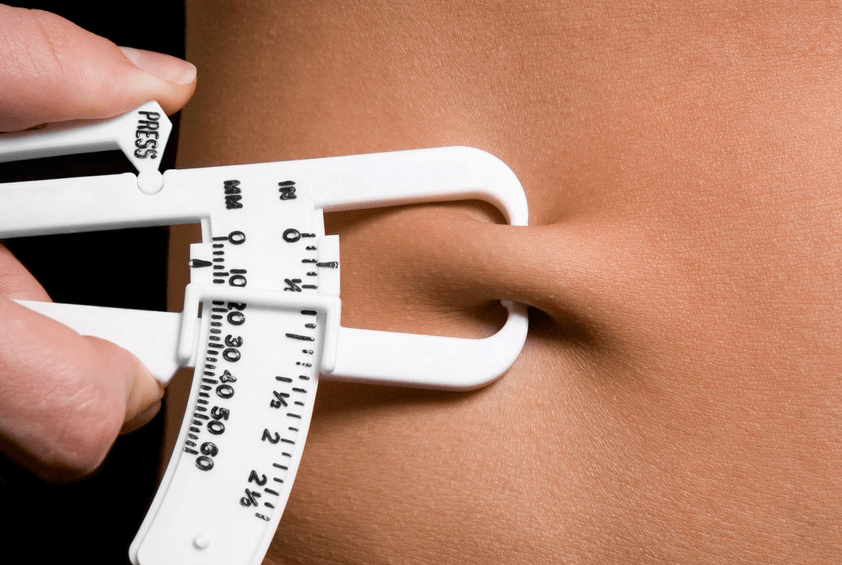
Benefits of Maintaining a Healthy Body Fat Percentage
Maintaining a healthy body fat percentage offers numerous benefits, including:
- Improved Overall Health: Keeping your body fat percentage within a healthy range can reduce the risk of various health conditions, including cardiovascular disease, diabetes, and certain cancers.
- Enhanced Physical Performance: A healthy body fat percentage can improve your physical performance by providing better energy utilization, reduced strain on joints, and improved muscular strength and endurance.
- Better Body Composition: By managing your body fat percentage, you can achieve a desirable body composition with balanced muscle mass and reduced fat mass, resulting in a more toned and defined physique.
- Improved Self-Confidence: Achieving and maintaining a healthy body fat percentage can boost your self-confidence, enhance body image, and promote a positive relationship with your body.
How to Maintain a Healthy Body Fat Percentage
Nutrition: Fuel Your Body with the Right Foods
Maintaining a healthy body fat percentage begins with proper nutrition. A well-balanced diet helps you shed excess body fat and provides essential nutrients for optimal health. Here are some key dietary considerations to keep in mind:
1. Emphasize Whole Foods
Focus on whole, nutrient-dense foods to achieve and maintain a healthy body fat percentage. These include fruits, vegetables, lean proteins, whole grains, and healthy fats. Whole foods are rich in vitamins, minerals, and fiber, promoting satiety and overall well-being.
2. Control Portion Sizes
Portion control plays a crucial role in managing body fat percentage. Be mindful of portion sizes to avoid overeating. Incorporate techniques like using smaller plates, measuring food portions, and practicing mindful eating. These strategies can help you maintain a calorie deficit essential for fat loss.
3. Prioritize Protein Intake
Protein is a vital macronutrient that supports muscle growth, aids in recovery, and increases satiety. Including lean protein sources such as poultry, fish, tofu, legumes, and low-fat dairy products can help you maintain a healthy body fat percentage.
4. Limit Processed Foods and Added Sugars
Processed foods and added sugars contribute to weight gain and increased body fat. Minimize your intake of sugary snacks, sodas, processed meats, and packaged meals. Instead, opt for whole, unprocessed alternatives to nourish your body and promote fat loss.
5. Stay Hydrated
Proper hydration is essential for overall health and maintaining a healthy body fat percentage. Drinking adequate water helps regulate metabolism, supports digestion, and promotes satiety. Aim to consume at least eight glasses of water per day.
Exercise: Move Your Body and Burn Fat
Regular physical activity is crucial for achieving a healthy body fat percentage. Exercise burns calories, builds muscle, improves cardiovascular health, and boosts metabolism. Here are some effective exercise strategies to support your fat loss journey:
1. Cardiovascular Exercise
Cardiovascular exercises, also known as cardio, are an excellent way to burn calories and reduce body fat. Engage in activities like running, cycling, swimming, or brisk walking for at least 150 minutes weekly. Cardio workouts elevate your heart rate, increasing fat burning and improving overall fitness.
2. High-Intensity Interval Training (HIIT)
HIIT workouts are a popular choice for efficient fat-burning. These workouts involve short bursts of intense exercise followed by brief recovery periods. HIIT torches calories during the workout and promotes an afterburn effect, where your body continues to burn fat even after exercise.
3. Strength Training
Strength training is essential for maintaining and building lean muscle mass, which helps increase metabolism and burn fat. Incorporate resistance exercises such as weightlifting, bodyweight exercises, or resistance band workouts into your routine. Aim for two to three weekly strength training sessions targeting different muscle groups.
4. Incorporate Functional Exercises
Functional exercises mimic everyday movements and engage multiple muscle groups simultaneously. These exercises, such as squats, lunges, push-ups, and planks, help improve overall strength, stability, and coordination. Incorporating functional exercises into your routine can enhance fat-burning and overall fitness.
Lifestyle Modifications: Beyond Diet and Exercise
Achieving a healthy body fat percentage goes beyond diet and exercise. Incorporating certain lifestyle modifications can further support your fat loss journey. Here are some key considerations:
1. Prioritize Sleep
Adequate sleep is crucial for maintaining a healthy body fat percentage. Lack of sleep disrupts hormone balance, increases cravings for unhealthy foods, and hampers recovery. Aim for seven to nine hours of quality sleep each night to support fat loss and overall well-being.
2. Manage Stress
Chronic stress can contribute to weight gain and hinder fat loss efforts. Implement stress management techniques such as meditation, deep breathing exercises, yoga, or engaging in hobbies to promote relaxation and overall mental well-being.
3. Stay Consistent
Consistency is key when it comes to maintaining a healthy body fat percentage. Stay committed to your nutrition, exercise, and lifestyle habits in the long term. Avoid crash diets or extreme exercise regimens, as they are unsustainable and can lead to weight cycling.
4. Seek Professional Guidance
If you’re struggling to achieve your desired body fat percentage or have specific health concerns, consider seeking guidance from a registered dietitian, personal trainer, or healthcare professional. These experts can provide personalized recommendations tailored to your needs and goals.

